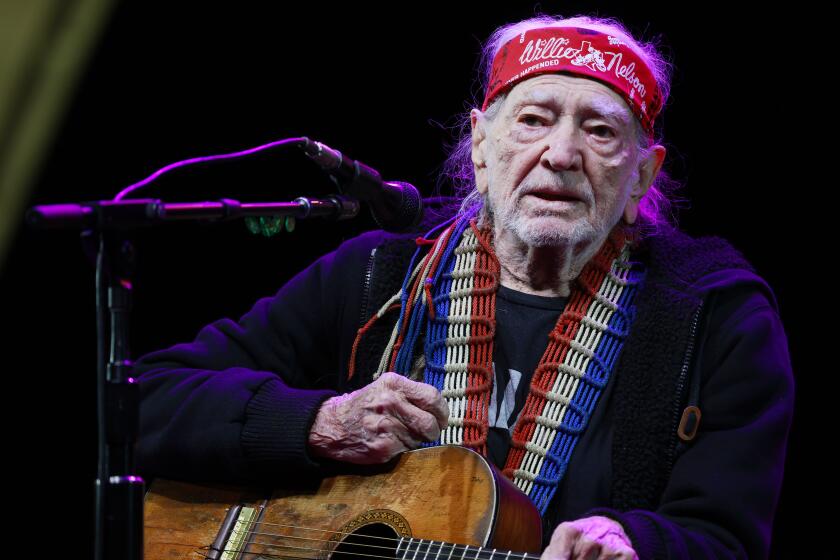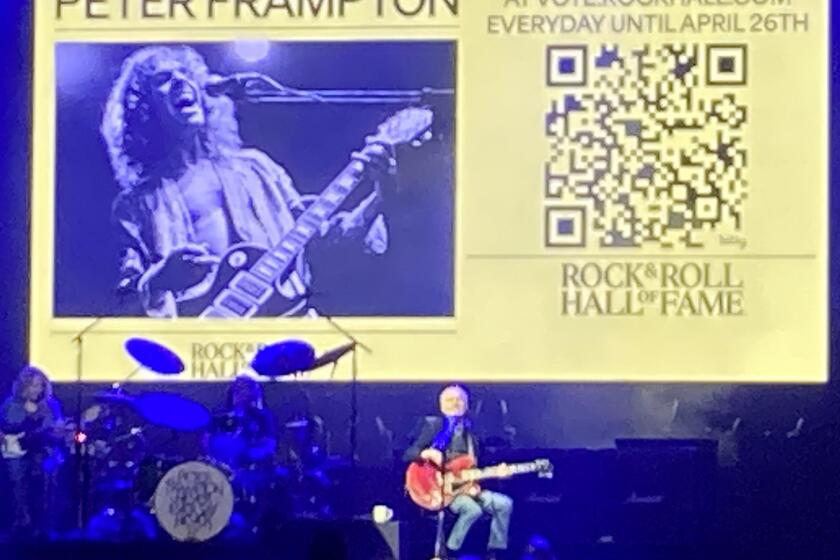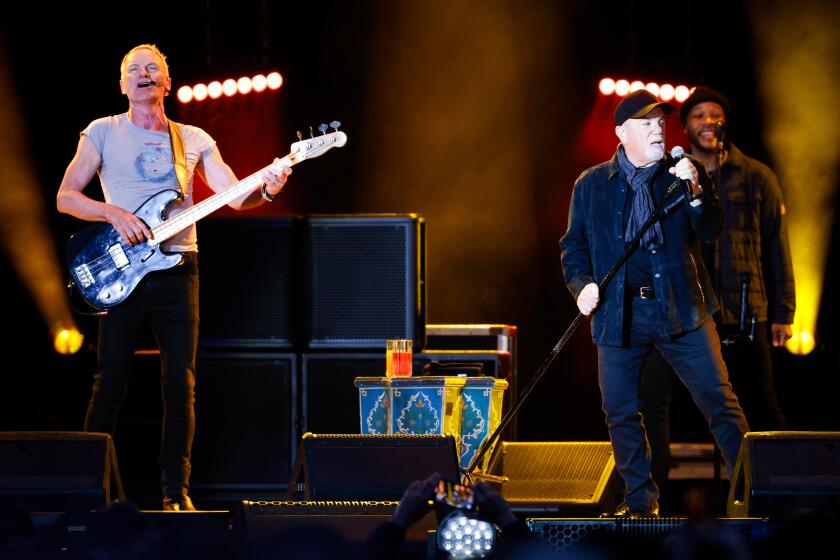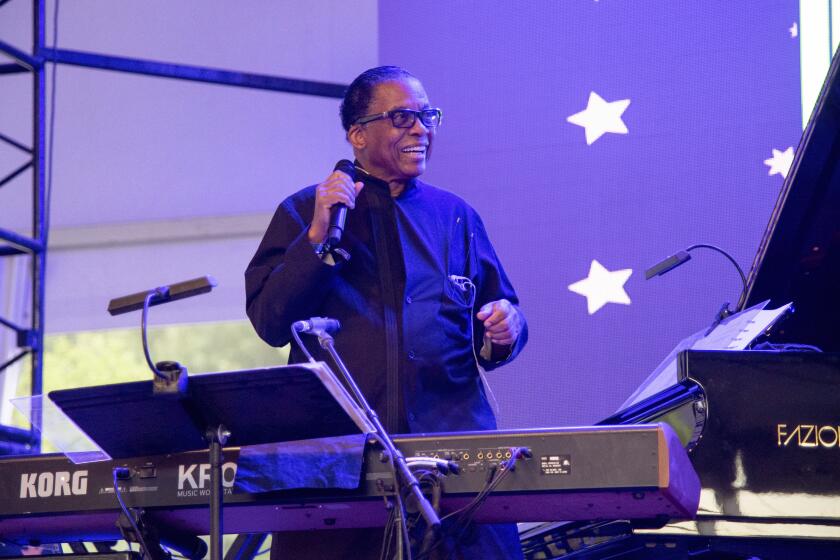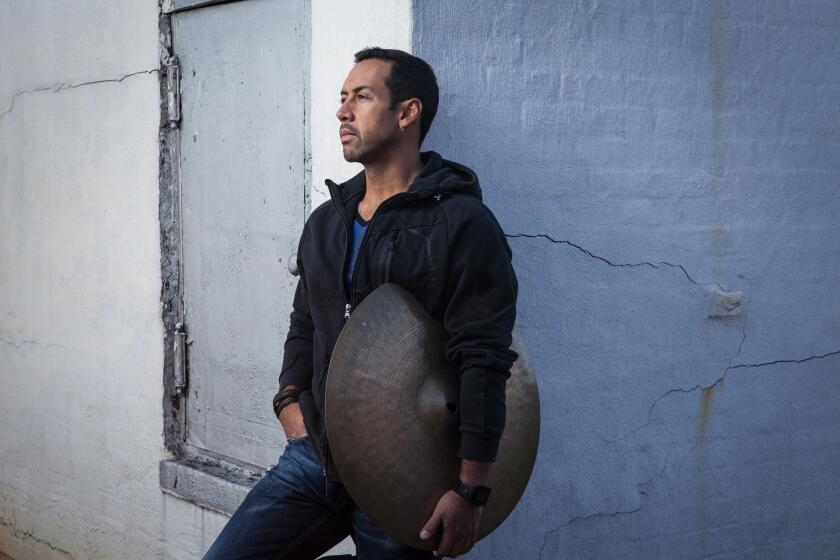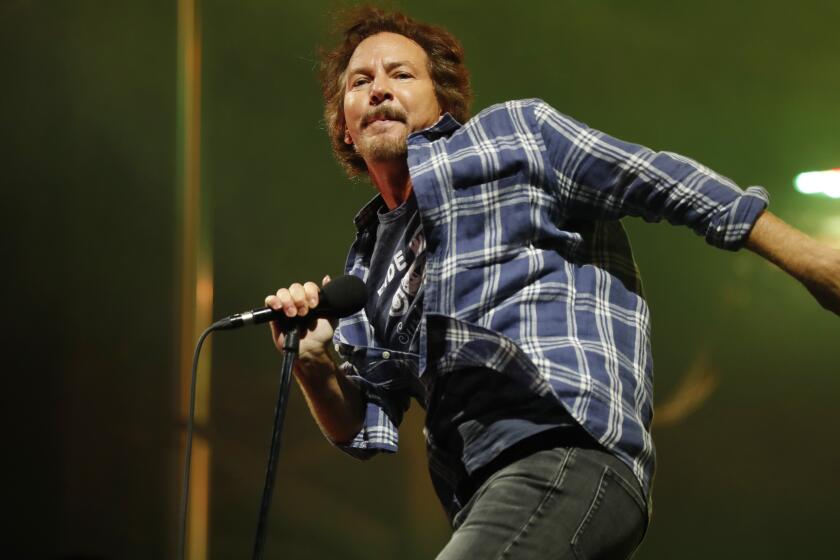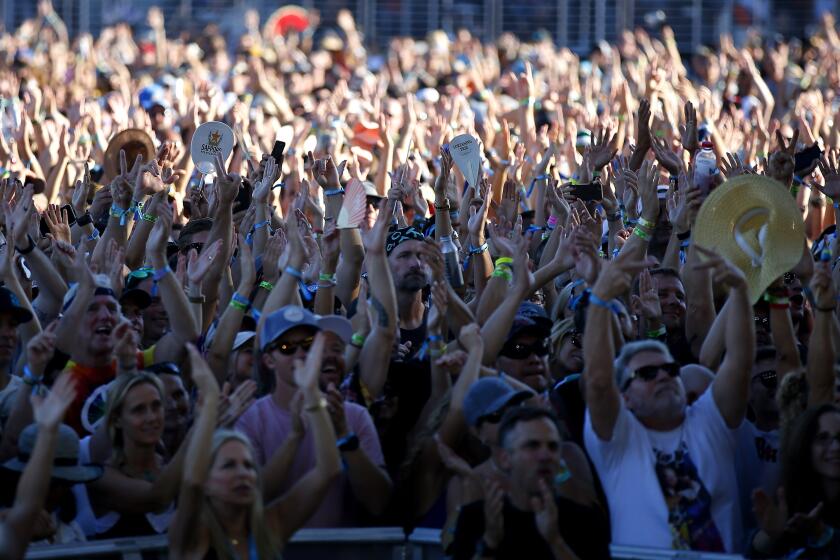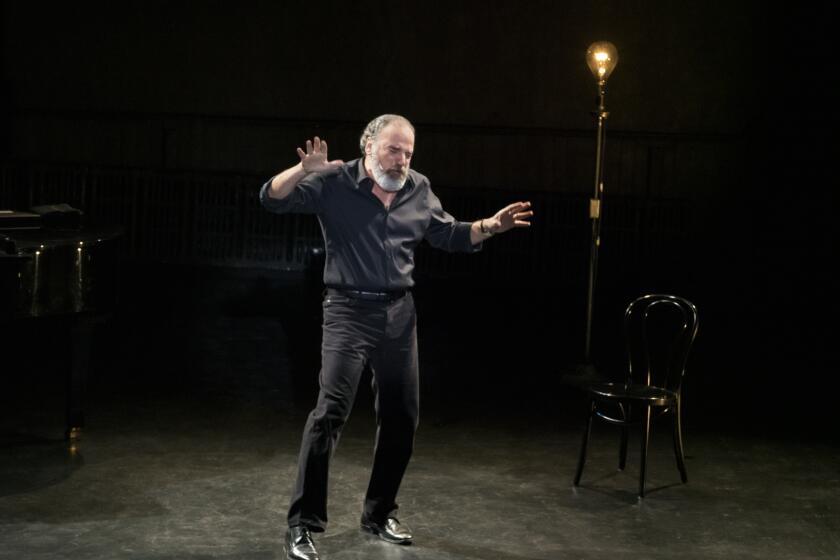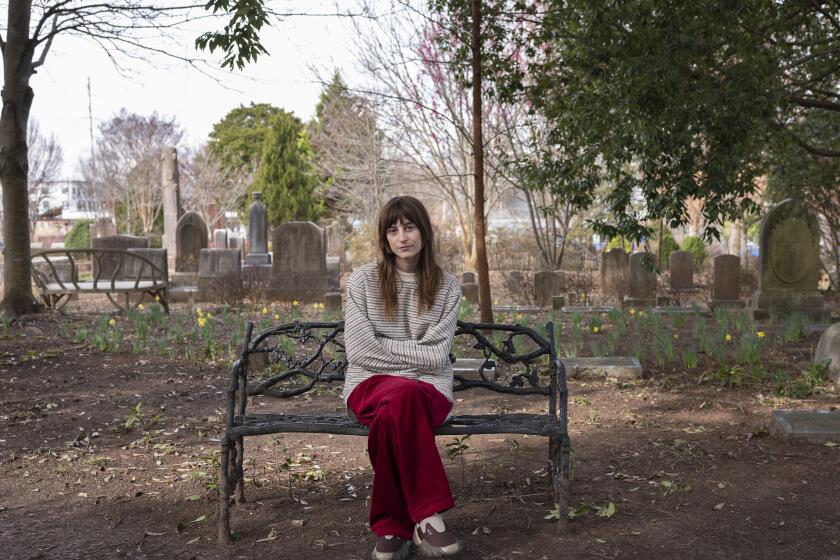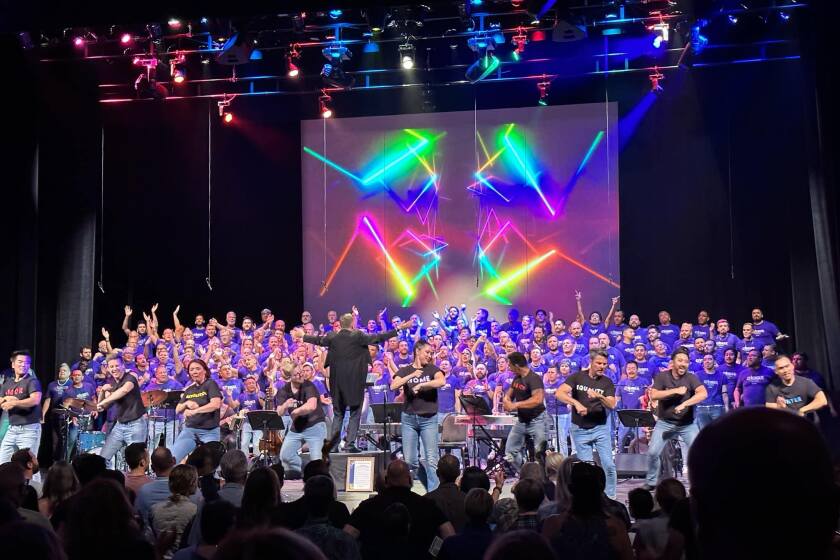Was 1973 the second best year ever for albums? Our readers weigh in with their favorites

How memorable a year was 1973 for albums whose music still resonated today?
That was the question posed in my Jan. 15 Sunday Arts+Culture article, “Is 1973 the second-best year ever for great albums? From Bob Marley to Little Feat, you tell us!”
We asked readers to weigh in with their favorite albums from 1973 and received an array of responses, including one from a loyal online Union-Tribune reader in Japan.
One of my favorites came from an irate music fan who berated me for not including albums released in 1973 by Yes, Black Sabbath and several of his other favorites. He implored me to apologize.
His letter appears below, along with the first batch of others we received. They have been edited for clarity and length.
Al Green and Bruce Springsteen!
Thanks for your stimulating list. It is always interesting to see what music moves different passionate music lovers. Here is my list of 5 favorites from 1973: “The Spinners,” The Spinners; “Call Me,” Al Green; “Mott,” Mott the Hoople; “Five and Dime,” David Ackles; “The Wild, The Innocent & The E Street Shuffle,” Bruce Springsteen.
By the way, I also found that 1973 was not close to having as many excellent releases as 1972.
Larry Bausch
Point Loma
Straight outta Poway!
I’ve been reading your reviews for years and have always found them informative. It’s clear you are a true music aficionado and supporter of local talent (e.g. my good friend and genre-busting musical hero Gregory Page).
I’m a native San Diegan who came of age, and still lives, in Poway (Poway High Class of ‘77). I opened my first bank account at the Home Fed on the corner of Poway and Pomerado Road when I was about 12. By the time I was 13, I had saved up enough babysitting money to buy a record player. And I started buying lots of records, too!
Here are my Top 5 for that year (although there are many other contenders): “Goodbye Yellow Brick Road,” Elton John (I loved that it was a double album and such a variety of styles); “Dark Side of the Moon,” Pink Floyd; “There Goes Rhymin’ Simon,” Paul Simon; “Don’t Shoot Me, I’m Only the Piano Player,” Elton John; “Innervisions,” Stevie Wonder.
Lauren Chin
Poway
Shame on you!
Shame on you! Yes, Emerson, Lake & Palmer, Jethro Tull, Black Sabbath and Mike Oldfield all had great albums in ‘73. “A Passion Play” was, admittedly, not Tull’s best, but still a great listen when high. No mentions for any of these is bordering on sacrilege. Please consider sending an apology for your thoughtless omissions.
Kevin Levesque
Stuart, Florida
‘Desperado’ by the Eagles!
Thank you for the great article on albums from 1973. I was 20 years old at the time and had a large collection and wide variety of albums at the time. 1973 was loaded with many albums I loved, so I’ll just mention one of them.
The Eagles’ “Desperado” was, and still is, one of my Top 5 albums ever. It being a concept album about outlaws was very cool. As usual, the vocals were tight and the sound was crisp and clean. I found it easy and comforting to just sit back and get taken away to a time of gunslingers and outlaws. It is a true classic for me.
Thanks for the all the years of great work you have done covering every genre of music, I always look forward to your articles.
Brad Ackles
Oceanside
Grateful Dead and The Stooges!
You have excellent choices and some I am not familiar with; I will definitely try Back Door. I was in the fourth grade in 1973 at an orthodox Jewish yeshiva elementary school and had not yet even discovered The Partridge Family. So, whatever I know from 1973 is from learning later in life.
I’d add the Grateful Dead’s “Wake of the Flood” album. While tuneful, I thought it captured the bands’ evolution to writing more complex and layered songs, especially “Eyes of the World,” and “Weather Report Suite.” Iggy Pop and The Stooges’ “Raw Power” deserve a mention, but maybe it wasn’t necessarily a defining moment for them, compared to previous releases.
I’ll leave it at that. Thank you so much for decades of knowledgeable and discerning music reviews!
Abraham Loebenstein, Ph.D
Rancho Mirage
‘Absolutely epic year!’
It was an absolutely epic year! I wasn’t quite a teenager yet, but I was fully immersed in the pop music scene on the (mostly AM) radio at the time. And in a year of outstanding albums, “Goodbye Yellow Brick Road” stands out like no other. It is Elton John and Bernie Taupin at their creative peaks. It is their “Sgt. Pepper’s.”
I am surprised you omitted “Brothers and Sisters,” the Allman Brothers Band’s first album following the death of Duane Allman, and probably the band’s best studio work. I remember so many songs that year because my brother and I were delivering the San Diego Union in the morning and those songs were in my brain as I tossed papers onto porches in Point Loma.
Here are my five favorite 1973 albums: “Goodbye Yellow Brick Road,” Elton John; “Dark Side of the Moon,” Pink Floyd; “Innervisions,” Stevie Wonder; “Countdown to Ecstasy,” Steely Dan; “Brothers and Sisters,” The Allman Brothers Band
Brock Spore
Yokohama, Japan
Alice Cooper rules!
Your Article on the “Magic of 1973” had one unbelievable omission ... the legendary Alice Cooper! The album was “Billion Dollar Babies.” Not only was it a huge, platinum-selling album that year, but the Alice Cooper band was in full swing at this point, terrorizing churches and scaring parents to death with their concerts’ brand of theatrical shock-rock that mesmerized audiences with snakes, swords, (simulated) bloodied baby dolls and stage “fights” with switchblades.
This was the first tour on which Alice introduced the guillotine and he was beheaded every night! (On earlier tours, he was hung!) Alice Cooper’s tour that year broke box office records (at the time), even outselling Led Zeppelin at concert halls such as Madison Square Garden and the Philadelphia Spectrum. Alice was the true king that year, when awful junk like Kiss was just releasing their first album.
A glaring omission, George! And if you’ve never seen Alice in concert, he’s still touring and putting on spectacular theatrical concert events. Check it out!
Maggie Tilger
Allied Gardens
Tom Waits at Thrifty’s!
I was a 22-year-old sociology student at SDSU in ’73 and spent as much of my Chula Vista Thrifty’s Drug store wages on rock albums. Oddly enough, one of my regular customers in the liquor department at that time was Tom Waits when he was in town to visit friends and relatives. If I recall, he liked Miller High Life beer in those days.
Of the albums you mentioned, I would have to say that The Who’s “Quadrophenia,” Stevie Wonder’s “Innervisions,” Steely Dan’s “Countdown to Ecstasy,” the Eagles’ “Desperado” and Paul Simon’s “There Goes Rhymin’ Simon” were my favorites. Oh, and the Doobie Brothers’ “The Captain and Me” as well.
I remember (and still listen to) some others from ’73, however, that were exceptional as well: “Mystery to Me,” Fleetwood Mac,; “Brothers and Sisters,” the Allman Brothers Band; “On the Road,” Traffic; and “Time Fades Away,” Neil Young. Linda Ronstadt and Genesis also had fine releases, but I don’t recall the titles at the moment.
And if Joni Mitchell’s “Court and Spark” had come out a month earlier than it did, that masterpiece would certainly make the cut. A sure-fire pick for your ’74 list! Thanks for reading this. I always look forward to reading your insightful and entertaining articles and interviews. Hope you are writing for a long time.
Mark McCool
Mission Hills
Stevie Wonder, Linda Ronstadt
Stevie Wonder, Innervisions”: The one album we agree on — and it even won the Grammy!
Van Morrison, “Hard Nose The Highway”: I have bought all of Van’s albums on CD and like almost every track on them. This is one of my favorites, along with “Moondance.” And you don’t even mention him!
Renaissance, “Ashes Are Burning”: I like all their albums, but I think most fans rate this one the best. Annie Halsam’s voice takes a little getting used to, but the instrumental work is the pinnacle of classical rock. I approve of your ignoring Yes and ELP, but (including) the Mahavishnu Orchestra?! Surely you jest.
Jackson Browne, “For Everyman”: Perhaps second to (Browne’s) “Late for the Sky” in 1974, but each of his first five albums define for me what makes the early ‘70s the Golden Age of pop music.
Linda Ronstadt, “Don’t Cry Now”: The best singer of the last 50 years never made an album worthy of her talent ... but the good cuts are sublime, as are the three albums of standards she made between 1984 and ’86 (featuring) Nelson Riddle’s final arrangements. I would include Bonnie Raitt, but her best album, “Streetlights,” came out in 1974.
Your distaste for mainstream pop music leads you to leave out most female singers. Off the top of my head, I commend to your attention Carole King (first five albums), Janis Ian (especially “Between the Lines”), Carly Simon (only her first two albums), Laura Nyro (only “The First Songs”), Bette Midler (her first two albums only), and Wendy Waldman’s first three albums (released between 1973 and ‘75).
Billy Joel, “Piano Man”: OK, Elton John sang a little better, but by 1973 Elton was well into the long decline that followed his first three albums, and Bernie Taupin was a dreadful lyricist.
Dave Chamberlin
Tierrasanta
Chick Corea, King Crimson
In 1973 I was a senior in high school. I’d been playing guitar for a couple of years, and was especially interested in rock guitar. But, more and more of my favorite musicians were jazz musicians reaching out to rock fans. I was less interested in the expression of character by the singer, and more interested in the possibilities of instrumental music.
Mahavishnu Orchestra, “Birds of Fire”: For a rock fan like I was, the Mahavishnu Orchestra was like gateway music to jazz. In my efforts to play electric guitar back then, John McLaughlin’s virtuosity made me feel like giving up. There was an implied devotion to . something, perhaps it was the music itself.
McLaughlin’s albums all thanked a certain spiritual teacher (Sri Chinmoy), and McLaughlin appeared on stage in all white garb, with meditative pauses before launching into his other worldly music. The lack of a singer meant that sharing the group’s personality all took place through the instruments, in an abstract way. There was a certain geometric approach to the songwriting that was novel.
Return to Forever, “Hymn of the Seventh Galaxy”: This was the other towering jazz fusion album of 1973, this one keyboard-led by Chick Corea. He played with kinetic virtuosity at high volume, also much more compositionally that other rock music. The band introduced new sounds on the synthesizer and electric guitar to get soaring solos.
King Crimson, “Larks’ Tongues in Aspic”: Robert Fripp unveiled a novel rock-guitar form here, in which he leads the band with these very staccato patterns that climb and descend the guitar’s neck.
Frank Zappa, “The Grand Wazoo”: One of my all-time favorite Zappa albums, featuring Frank leading a large ensemble playing zany, long-form compositions.
Chick Corea and Return to Forever, “Light as a Feather”: Thanks, Chick for introducing me to sax player Joe Farrell and singer Flora Purim in an acoustic-ish (is an electric piano acoustic?) setting. Beautiful melodies in a relaxed Latin jazz style, great for appreciating Flora’s exotic, Portuguese-accented vocals.
Jim Menders
San Diego
Get U-T Arts & Culture on Thursdays
A San Diego insider’s look at what talented artists are bringing to the stage, screen, galleries and more.
You may occasionally receive promotional content from the San Diego Union-Tribune.

